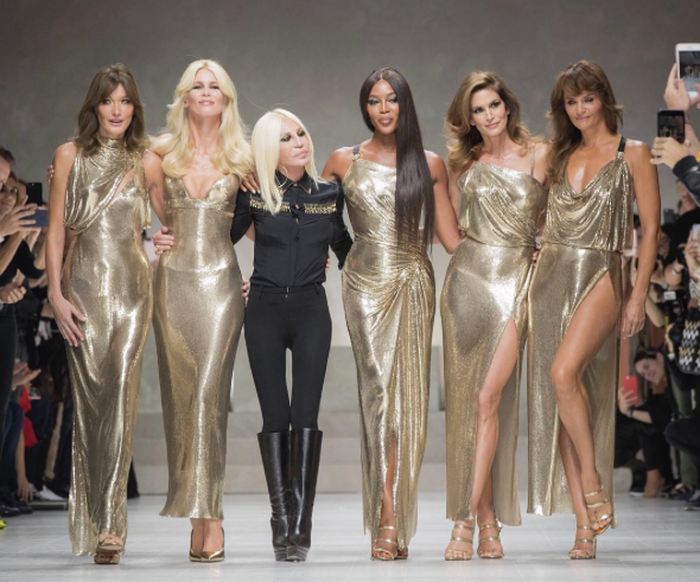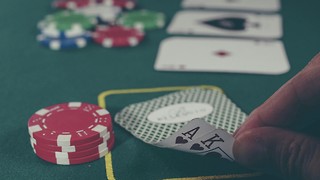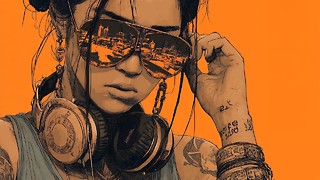Paris Fashion Week: the highlights
As the fourth and final instalment in the Fashion Month series, Robyn Schaffer dissects the most hotly-anticipated week of all
Paris: home of the world’s finest fashion. After three hectic weeks in New York, London and Milan, we all eagerly await the Paris collections. From Chanel to Miu Miu, Vuitton to Balenciaga, this is the biggest week of Fashion Month. After the positive and excitable collections of the three previous cities, Paris chose to stick to its guns; “fashion is made to make more fantastic what’s ordinary,” said Valentino’s Pierpaolo Piccoli, and that’s just what it did.
Christian Dior
A year has passed since Maria Grazia Chiuri’s debut collection for Dior and we’ve come a long way from the hotly-contested $600 ‘We Should All Be Feminists’ t-shirts. About this controversy, Chiuri said, “These are my values! Did they really believe I was trying to capture a trend? These are strange fashion times we’re living in. There’s something wrong.”
“It makes us think about and question the nature of fashion as art, and isn’t that the point?”
Nonetheless, Chiuri has been undeniably successful at Dior. This season has been inspired by feminist artist Niki De Saint Phalle, who wore Dior designs by Marc Bohan in the Sixties. This notion of the Sixties and Seventies was felt this season in fringing, mini dresses, lashings of leathers and polka dots in washes of black, white and denim. Chiuri brought the past into the present, mixing these odes to her adolescence with the modern, sleek tailoring which gives Dior its timelessness.
Where, last year, elements of Chiuri’s work at Valentino pervaded her collections, this time they were metamorphosed into something entirely new; there were elegant dresses comprised of sparkling silvers, ruby reds and pale pinks juxtaposed by masculine trench coats and boxier silhouettes. Overall, it was a signal of positive change at Dior and while Chiuri may have taken time to find her feet, it was certainly worth the wait.
Saint Laurent
Nowadays I find Saint Laurent (under the relatively new creative direction of Anthony Vaccarello) a difficult brand to relate to. Yves Saint Laurent, a protégé of Christian Dior himself, founded his label in 1961 on the premise of creating high quality haute couture, and was eventually credited with the popular rise of ready-to-wear collections.
In the present, however, the French fashion house’s brand image seems to have shifted slightly. There is no denying that Anthony Vaccarello (in addition to Hedi Slimane and Tom Ford before him) is creating high quality garments for which the label is famed; this season, hemlines were short, plunges were low, and, as it seemed, less was more. Vaccarello gave us a Saint Laurent girl who was bold, daring and fearless, presenting us with knee-high boots, skimpy skirts and puffball dresses that gave us a taste of the Yves Saint Laurent of old, mixed with the new edginess of Vacarello’s vision.
Sure, the clothes were great, but it’s the models and the image they convey and promote that I take issue with. While Paris now requires models to have doctors’ notes ensuring they are of a healthy weight, I can’t help but notice time and time again the striking thinness of the models hired by Saint Laurent. To me, this propagates ideals of what is an unnatural shape for most women, embedding this into the brand’s DNA. While many designers are helping the fashion industry move in the right direction, Saint Laurent still has some way to go.
Off-White
You’ve probably never heard of Virgil Abloh, but no doubt you soon will. The long-time collaborator of Kanye West and friend to the likes of Bella Hadid has shot to stardom in the past few years with his own label, Off-White, which boasts über-cool street-style-inspired looks for only the bravest of fashion fans.
This season, Abloh was inspired by the late Princess Diana, conglomerating her strength, elegance and sophistication into 37 looks. Clean tailoring (a popular trend this Fashion Month) was teamed with feminine silky dresses, and crisp white shirts with leather gloves, perfectly encapsulating the essence of Diana’s then-revolutionary style choices.
My favourite part, however, was the peach tulle dress, unusual for Abloh. This, along with other dresses with large hooped skirts, gave the collection that ‘princess’ feel reminiscent of some of Diana’s most renowned looks. Dispersed among injections of fuchsias and florals, these elements of the collection worked in glorious harmony to recreate something of Diana’s positive impact, love for life and indomitable bravery. With Naomi Campbell to close the show, Off-White was truly the cherry on top of Paris Fashion Week.
Chloé
This season, Natacha Ramsay-Levi presented her debut for Chloé, taking over from Clare Waight Keller who is now at Givenchy. Ramsay-Levi has previously designed for both Balenciaga and Louis Vuitton, under the careful eye of Nicolas Ghesquière, and so expectations were high.
Luckily, she delivered. Chloé is a brand notorious for its laid-back, bohemian-chic French vibe, yet this season Ramsay-Levi gave the Chloé girl an update, taking her from soft and elegant to striking and confident. Hints of her work at Louis Vuitton were implicit in fabrics, sharp silhouettes and autumnal, earthy colors, but this collection was entirely her own.

Milan Fashion Week: the highlights
"What I love about Chloé is that it’s something very democratic and super easy to understand. You don’t need to be a fashion person to get it," Ramsay-Levi said. This statement manifested itself in the form of simple yet impeccably crafted pieces that spanned leather jackets, flounced dresses, tops and wearable daytime trousers. Chloé is very much for the ‘everyday’ woman; there are no frills here (aside from the literal frills adorning dresses and tops), but rather uncomplicated, beautiful clothes which elevate any wardrobe from the ordinary to the extraordinary.
Rick Owens
Rick Owens is something of a seasoned veteran in the fashion industry and his consistency has helped gain him a badge of honour. His label is a sort of paradox, ranging from simple monochromatic pieces (think plain t-shirts and trousers in black, white or grey) to highly avant-garde creations straddling the thresholds of clothes and art.
This collection, however, was largely the latter. Monochrome was the agenda, of course, consisting predominantly of black, white, grey, green and yellow on structural dresses and tops, which were the most ‘normal’ pieces in the collection. The more avant-garde pieces are not conventionally wearable, but therein lies the beauty. Picture a pair of boxers with holes cut into them and pillows stuffed inside, poking out of the holes. Don’t get it? Me neither.
But that’s what I love about Rick Owens. We trust his vision and it pays off. His simpler pieces are some of the most wearable and well-made, and his more daring projects provide us with examples of the true artistry of good fashion design. It makes us think about and question the nature of fashion as art, and isn’t that the point?
 News / Trinity exam burglar jailed for 11 months18 July 2025
News / Trinity exam burglar jailed for 11 months18 July 2025 News / Chancellorship candidates express concern about conduct of election 19 July 2025
News / Chancellorship candidates express concern about conduct of election 19 July 2025 News / Write for Varsity this Michaelmas13 July 2025
News / Write for Varsity this Michaelmas13 July 2025 Music / Inheriting a ghost 19 July 2025
Music / Inheriting a ghost 19 July 2025 Comment / The next Chancellor has their work cut out for them19 July 2025
Comment / The next Chancellor has their work cut out for them19 July 2025









